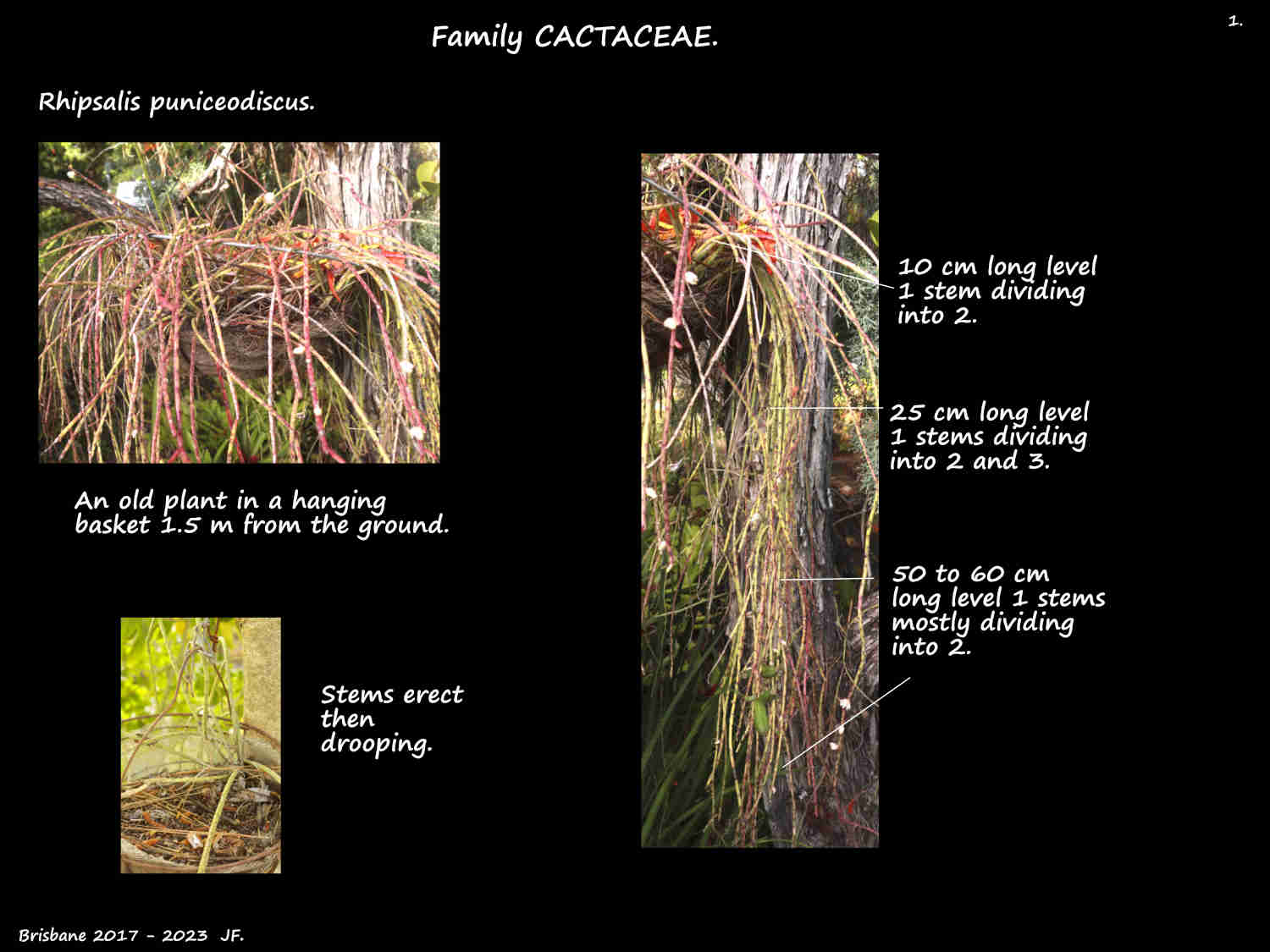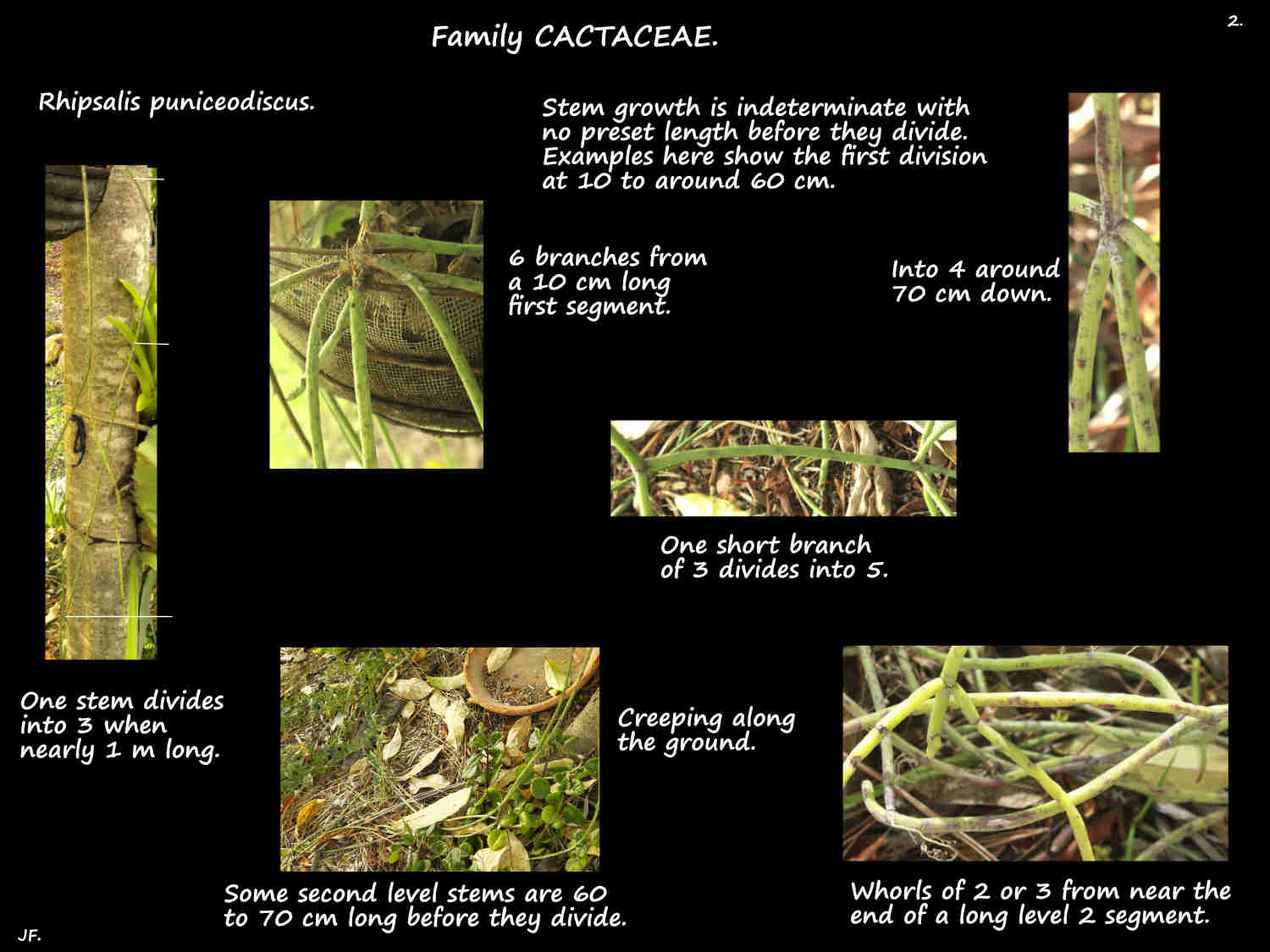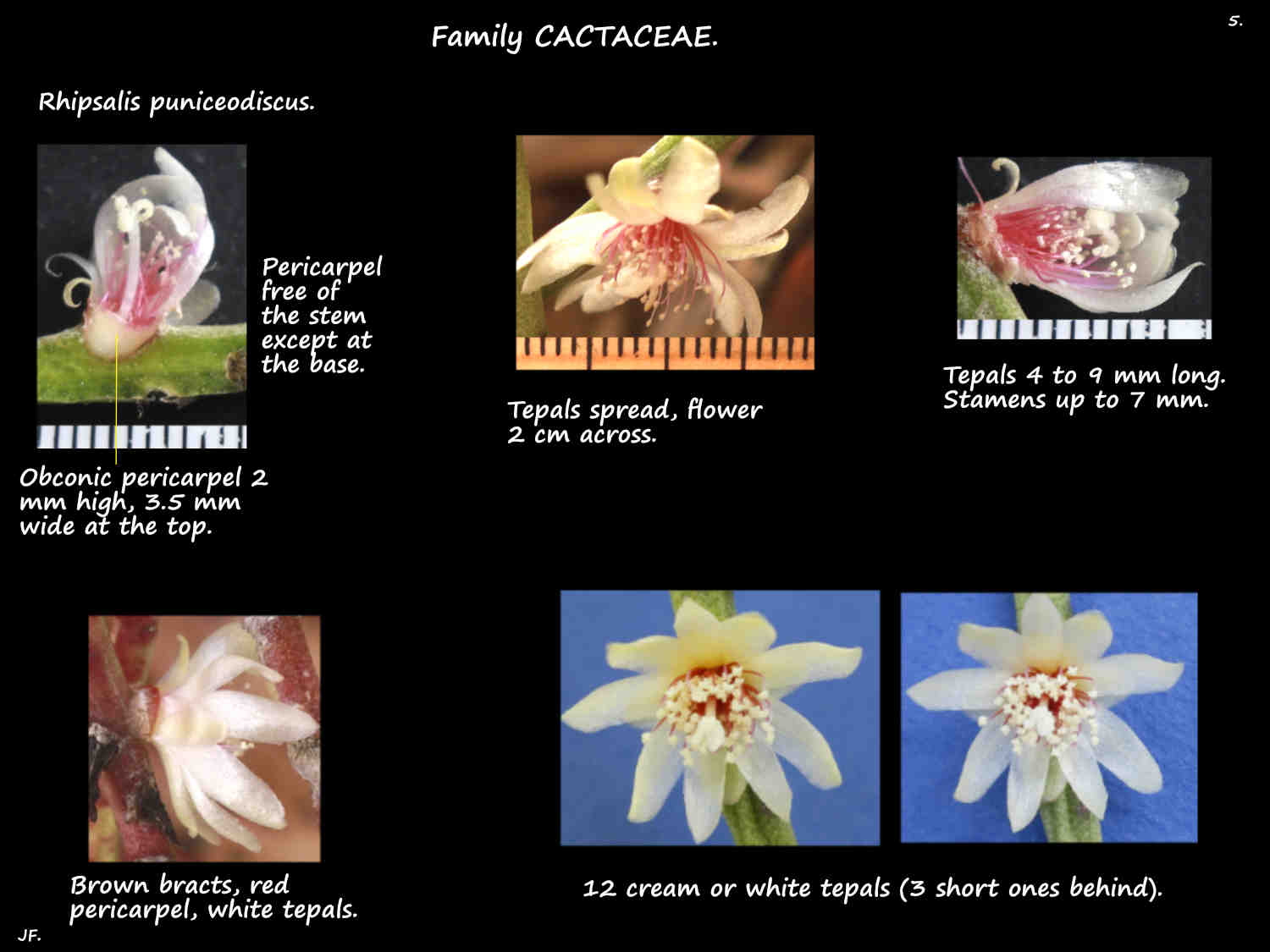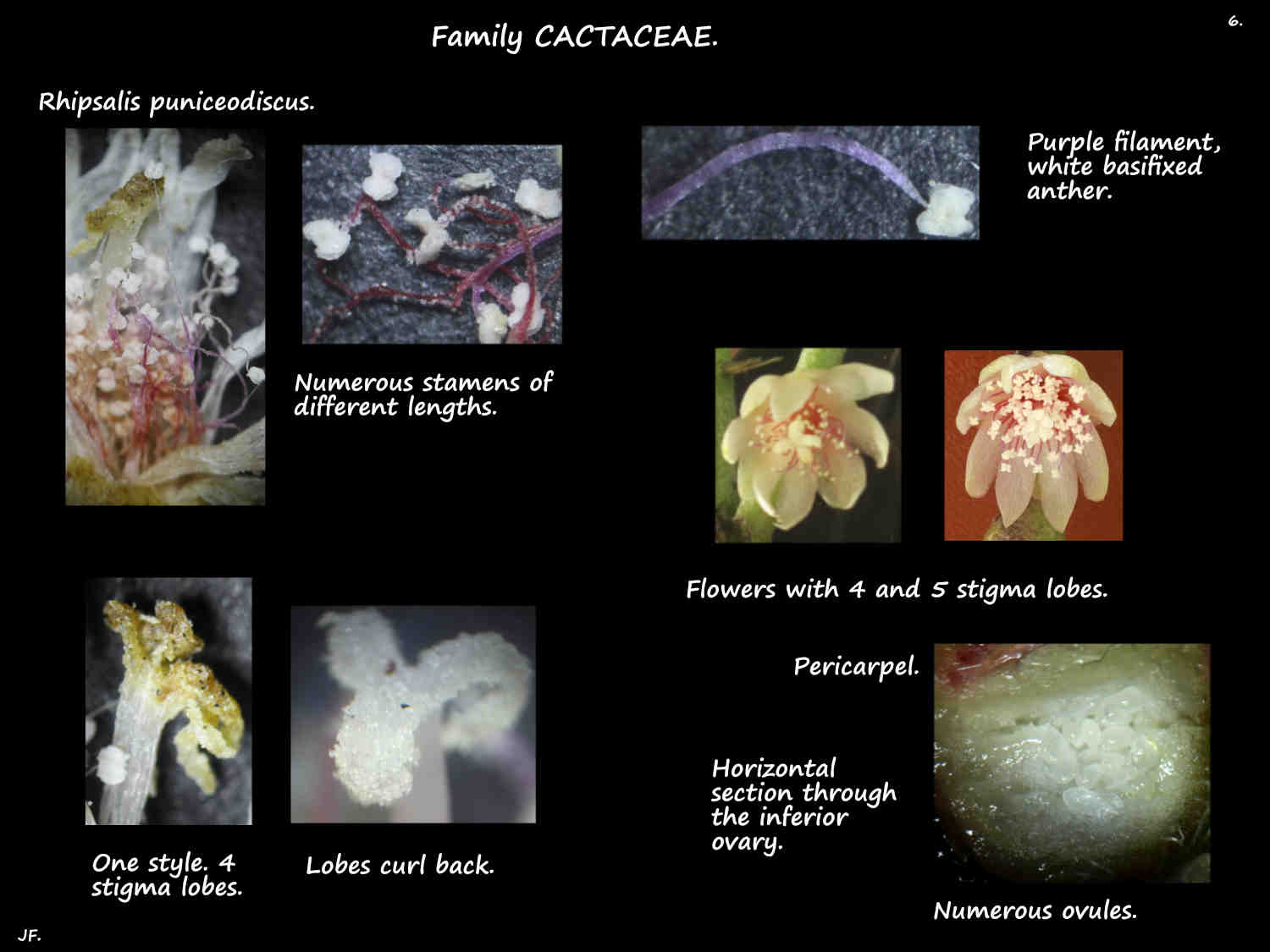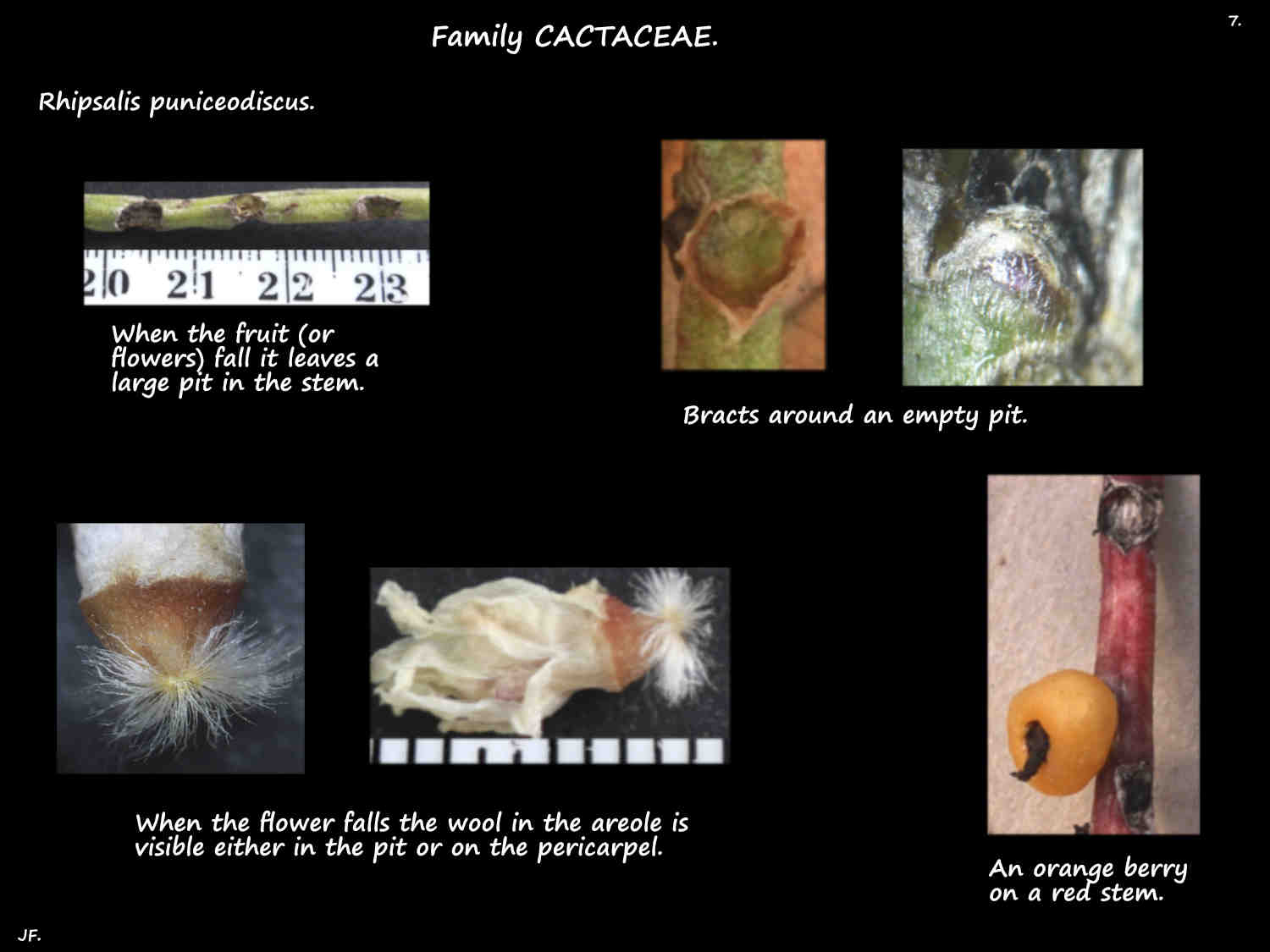Rhipsalis puniceodiscus.
An epiphytic cactus with erect pale green stems when young.
Older plants have drooping branches 3 to 4 mm thick.
They produce aerial roots and can creep along the ground.
Stems are indeterminate having no preset length and vary from a few cms to 50 or 60 cm long.
The tip of the terminal segment is pointed.
Each segment can divide into 2 to 6 segments.
Stems may develop dark red or reddish-purple flecks or more extensive areas when exposed to the sun.
There are numerous small pores or stomata and minute scale leaves.
The segment surface around the slightly sunken areoles is red.
Flower buds growing from the areoles are angled slightly down.
Buds are protected by a ring of bracts that remain when the flower falls.
One third of the obconic pericarpel is sunken into the stem.
The green pericarpel, 2.5 mm long becomes red when the flower is mature.
The perianth, 1.5 to 2 cm across has up to 12 tepals with the longest around 9 mm long.
They are cream or white sometimes with a slight red tint.
There are numerous stamens of various lengths up to 6 mm.
The purple filaments have basifixed anthers.
The inferior ovary, with 1 locule has a 6.5 mm long style with 4 or 5 stigma lobes that curl back.
The fruit are slightly flattened spherical berries around 6 mm long and 8 mm wide.
Mature fruit are yellow or orange in species plants but a cultivated form has red berries.
They have a few dark brown seeds.
When the flowers fall they leave a pit or scar in the stem.
There are woolly fibres in the areole that are only visible after the flower has fallen.
J.F.
